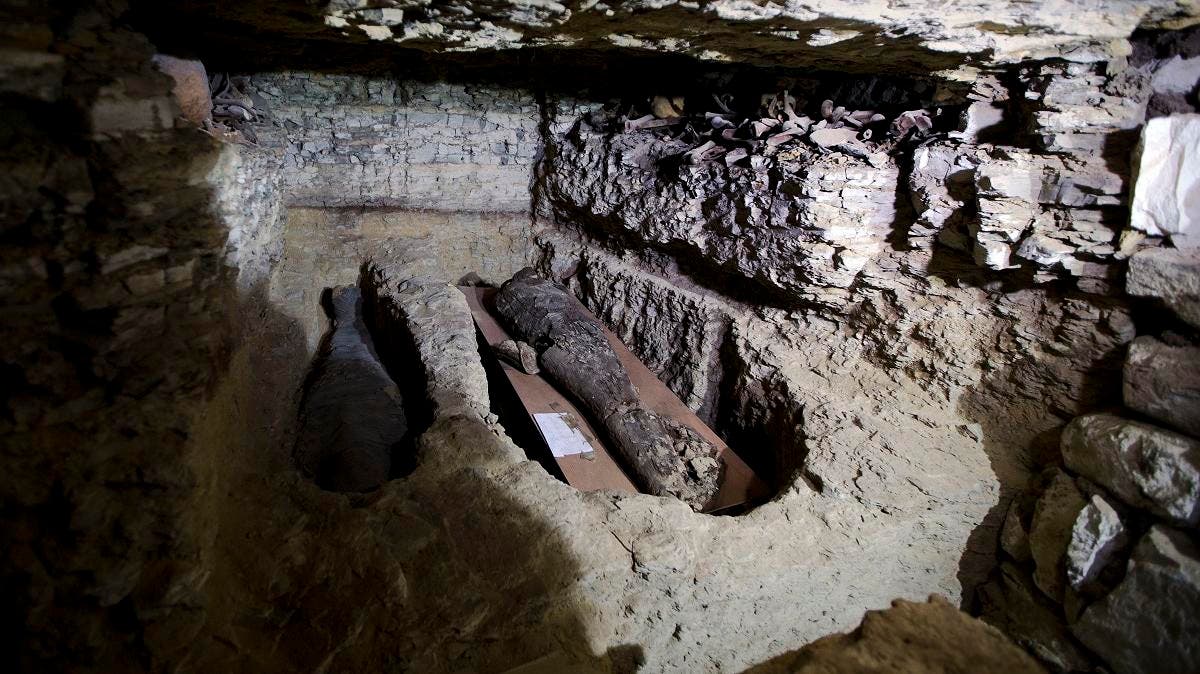With Egypt’s recent tilt towards resurrecting its historical importance and looking for new avenues of research and archaeological digs, another find has been added to the mix this time from Aswan. A large, and as of now, unknown Greco-Roman tomb has been found and excavated in Aswan, carried out by the Egyptian-Italian Mission at west Aswan (EIMAWA), that was stretched out over 6 months, between May and October 2021, reports La Statale News .

And what makes this discovery special are the 20 mummies that were discovered in this massive Greco-Roman tomb located in the vicinity of the Aga Khan Mausoleum. According to Mostafa Waziri, secretary general of the Supreme Council of Antiquities, the recently discovered Greco-Roman tomb has two parts, one above ground (made of rectangular sandstone and mudbrick, which hid the tombs), and one carved into the rock! Dated to the Greco-Roman period, the tomb called AGH032 was looted by grave robbers in antiquity, reports The Heritage Daily .
The West Aswan Greco-Roman Tomb: Objectives and FindsThe mission, headed by Patrizia Piacentini, Professor of Egyptian Egyptology and Archaeology at the University State of Milan, and Abdel Moneim Said, Director General of Antiquities of Aswan and Nubia (SCA), has been working in the vicinity of the Aga Khan Mausoleum since 2019, where previously 300 tombs dating from the 6th century BC to the 4th century AD had been found.

The Aga Khan Mausoleum, the mausoleum of Aga Khan III, Sir Sultan Muhammed Shah, who died in 1957, was constructed between 1956 and 1960 on the site of an ancient Egyptian necropolis .
Along with the Greco-Roman tombs , there were other interesting archaeological finds including offering tables, stone panels covered in hieroglyphic script , a copper necklace engraved with Greek script, with the name Nikostratus on a plaque next to it. Coffins made of clay and others of sandstone were also found.

Moreover, a number of wooden statues of the Ba bird and parts of colored cartonnage were also found in the Greco-Roman tomb. Colored cartonnage was used in Egypt for making funerary masks. Cartonnage includes plastered layers of fiber or papyrus, flexible enough for molding while wet. The method was used in funerary workshops to produce cases, masks, or panels to cover all or part of a mummified body.
The tomb also contained a landfill of animal bones, pottery fragments, offering tables and plates inscribed in hieroglyphics, reports The Express . The landfill area was clearly used for ritual ceremonies, most likely as a votive place for offerings or consecrations. It was here, in the east wall of the tomb that a man’s mummy was found. The researchers believe this man, whose name was Nikostratus, was the owner of copper necklace engraved with Greek script also found in the tomb.

The room is overlooked by four burial chambers dug deep into the rock, where a beautiful terracotta sarcophagus of a child and a beautiful cartonnage were discovered. While this child mummy remains unnamed, there was another child mummy with a name plaque found, located inside the mummy’s chest. In total, 30 mummies were found inside the four tunnels dug into the rock, including very young and very old people.
In 2019 the AGH026 Greco-Roman tomb was discovered in the same compound yielding 45 new mummies. These mummies were radiologically scanned to determine age, sex, and disease. The results showed that 30% of the mummies were children aged between 0 and 10. The same process was used on the mummies discovered at the new Greco-Roman tomb found in 2021 and revealed that the mummies belonged to at least three different families. Some of these mummies showed evidence of infectious diseases and metabolic disorders, along with age related illnesses like arthrosis, a non-inflammatory degenerative condition that mainly affects cartilage.

Greco-Roman Culture: A History of Cultural ContinuityThe Greeks had arrived in Egypt as early as the 7th century BC and by the 4th century BC Alexander the Great’s conquests had established the city of Alexandria . After Alexander’s death, his empire was divided amongst his generals. Ptolemy I Soter inherited Egypt. The Greco-Roman period ended with the death of Cleopatra in 30 BC. This period in Egyptian history is also known as the Hellenistic period.
When the Roman Empire annexed the Ptolemaic Kingdom in 30 BC, Egypt became an extremely important agricultural and trading center, the most revered outside Rome itself, with a highly developed urban economy. This created a vibrant Greco-Roman culture, with a sense of historical continuity between both of these great ancient empires. And though Ptolemaic institutions were reformed the overarching authority of Roman law triumphed over the Greco-Egyptian legal system.

Interestingly, the first Roman emperor Augustus initiated a new Roman imperial cult in Egypt, which seemed like a break from past traditions. Yet, at the same time, Augustus ordered that his image be used in conjunction with the identification of Zeus, the same way that Alexander the Great had used Zeus’s image to project an image of liberation from the tyrannical rule of the pharaohs.





